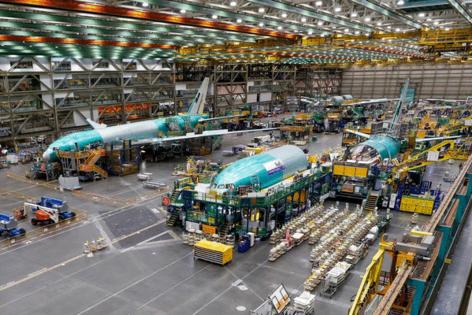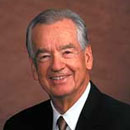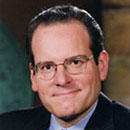After years of 777X line delays, Boeing's new freighter hits milestone
Published in Business News
With just one drill hole, Boeing has officially begun production for the newest member of its 777X family: the 777-8 freighter.
Roughly 100 Boeing employees gathered Monday in one of the company’s Everett, Washington, factories to cheer on a robotic arm and its human operator as the machine drilled a hole in a wing spar bound for the new cargo plane.
A wing spar is a 108-foot structural component that acts as the backbone of the plane’s wings. Each wing has two spars, one in the front and one in the back.
Drilling a hole in the wing spar is traditionally the first milestone to mark production of a new plane model, program leaders said Monday as they stood in front of the robotic arm and initiated a 10-second countdown.
“It may seem small (but) it’s that one hole that we’re about to drill that gets everything started,” said Jason Clark, vice president and general manager for the 777/777X program, as the robot came to life, lowering toward the wing spar and zeroing in on its location.
“All that work that goes into starting the program, the years of development, the years of engineering, the years of supply chain procurement and contracting … the blood, sweat and tears, all of that innovation comes together and is represented in that first hole,” Clark said.
Boeing launched its new freighter in 2022 with an announcement at the White House and a commitment from Qatar Airways to order up to 50 of the new planes, the largest freighter deal by value in the company’s history.
The freighter, also known as the 777-8F, is part of Boeing’s 777X family, the latest generation of its 777 model. The family includes the cargo plane, as well as two passenger variants, the 777-9 and 777-8.
The 777X planes are larger and more fuel-efficient than other widebodies on the market, Boeing says, featuring wings so long that Boeing added foldable wingtips to allow the plane to fit into airport gates.
But the 777X has faced years of setbacks since Boeing introduced the passenger variants in 2013 at the Dubai Air Show. The 777-9, the first that Boeing expected to deliver to customers, has been stymied by manufacturing defects and heightened regulatory scrutiny following two 737 Max crashes in 2018 and 2019.
Boeing has yet to receive certification from the Federal Aviation Administration to fly passengers in the 777-9, but company executives are optimistic approval is coming soon and expect the plane will enter service in 2026.
When it comes to the freighter, Boeing expects to deliver the first planes to customers in 2028, one year behind its original estimate when it launched the program three years ago. It has 59 firm orders for the new cargo plane.
Though a milestone, the hole drilled Monday is the first in a very long line of steps to complete production of the 777-8F.
The wing spar alone requires 938 robotically drilled holes, work that will span about five eight-hour shifts, according to Robin Thorning, the composite spar automation manager.
Boeing uses the robot, rather than manual labor, for the drilling to avoid repetitive motion injuries, Thorning said. He estimates about a dozen spars are being worked on at once.
To make the spar, Boeing employees use a machine to layer carbon fiber tape onto tooling, shaping the structure and then hardening it through pressure and heat.
The layers of carbon fiber that make up a set of 777X wing spars would stretch across 392 miles, Boeing said Monday.
The wing spar moves through a handful of stations before leaving the Everett composite spar shop," where employees gathered Monday — and then makes several more stops before it finally reaches the stage where the wing is joined to the fuselage of the plane.
Inside Boeing’s main Everett factory, the plane moves through a U-shaped production line where workers join the wings to the fuselage, and later attach the nose and tail to the center body of the plane.
After final assembly, Boeing will roll the plane out of the factory to be painted and fueled before it heads to the customer.
Before any of that can happen, though, machine operator Casey McDowell will continue to line up the robotic arm with the wing spar as he did on Monday, drilling holes and checking to make sure the final results are clean and round.
In some cases, the robot will add a fastener; in others, it will leave the hole empty for mechanics to manually add other components down the line.
McDowell, who has been with Boeing for 18 years, said the production and design process has become more sophisticated over the years. Monday’s event, marking the first 777-8F wing spar to move through production, is a “big deal,” he continued.
“As far as I know, it’s the first part that a large portion of the factory is going to get,” McDowell said. “For the wings people and the center of the plane people, this is the first thing they’ll deal with. … Without wings, the plane doesn’t fly.”
Boeing’s fleet accounts for 90% of global freighter capacity, said Ben Linder, 777 and 777-8F vice president and chief product engineer, speaking at the Everett event.
"That's a privilege to have, a legacy we've earned," he said. And, with the 777-8F, "one we're going to continue.
©2025 The Seattle Times. Visit seattletimes.com. Distributed by Tribune Content Agency, LLC.












Comments